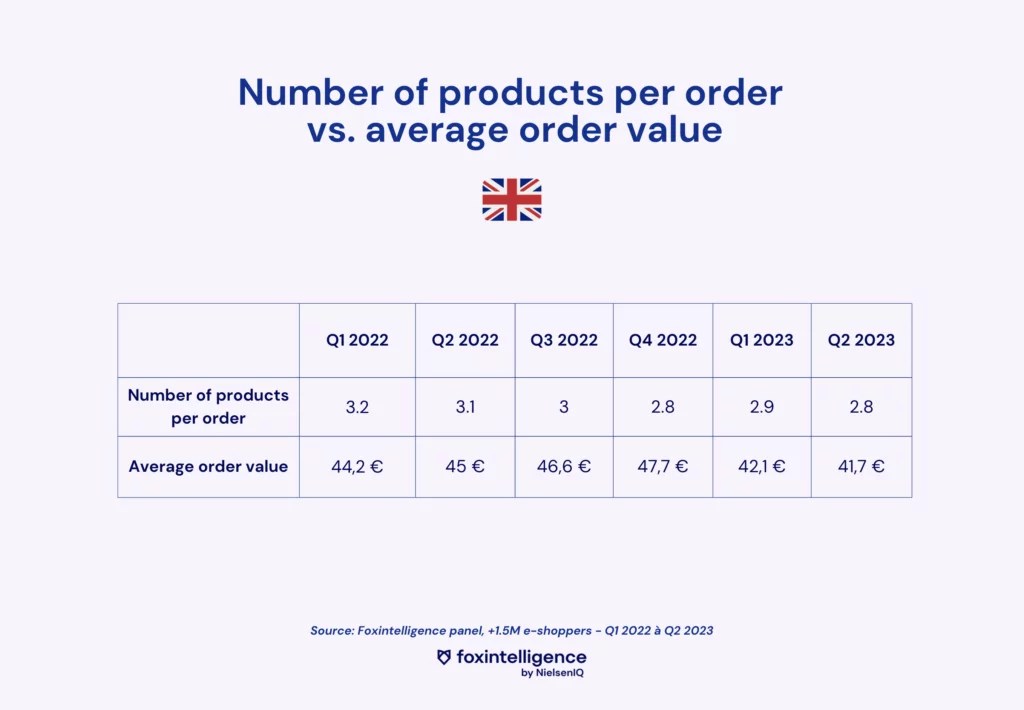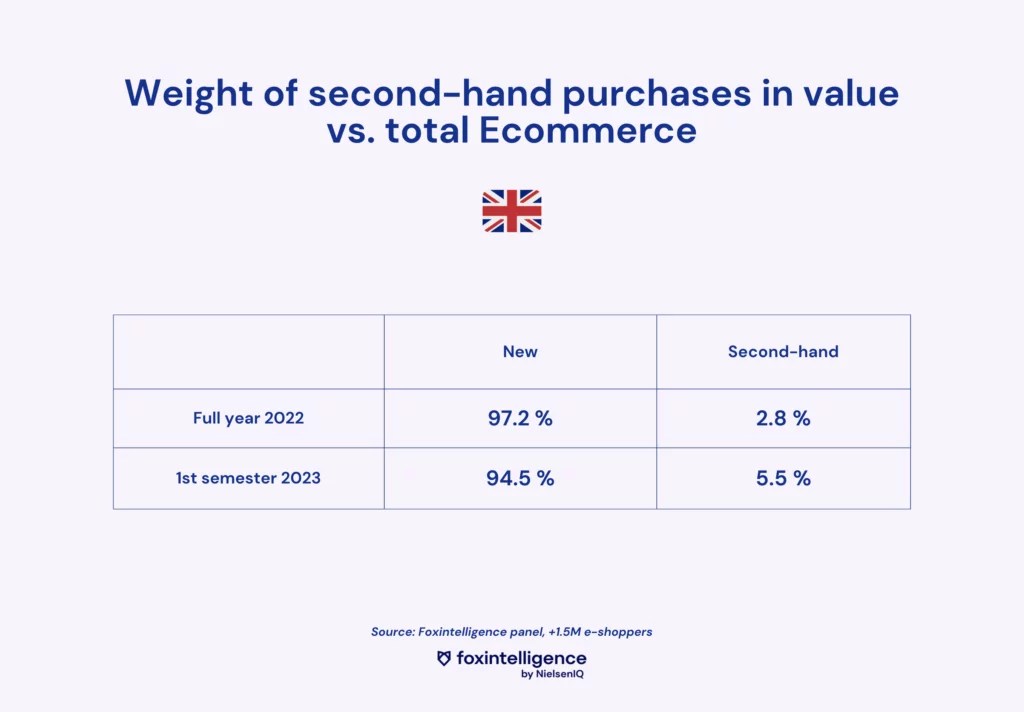The impact of inflation on the number of products per order
Rising prices have had a significant impact on British shoppers’ purchasing habits: it has forced them to buy less. Since January 2022, the number of products per order has only fallen, decreasing from 3.2 products per order to 2.8 in the space of 18 months.
As a result of the cost-of-living crisis, E-shoppers across the Channel have been unable to maintain their old consumption habits.
Their average basket increased steadily in 2022, and is now finally falling, from €47.7 at the end of 2022 to €41.7 at the end of June 2023.

Second-hand purchases are growing in importance
Another factor worth noting is the significant growth in second-hand purchases in UK E-commerce.
While this trend can be attributed to environmental awareness and the desire to participate in a circular economy, there is no doubt that consumers are primarily looking to save money by turning to second-hand goods.
More and more brands and retailers are integrating second-hand into their business models – making refurbished and second-hand products more accessible to a wider audience.
The percentage of second-hand purchases by value will almost double between 2022 and 2023, rising from 2.8% of online purchases to 5.5%.
Within the clothing category, the weight of second-hand in online clothing purchases has doubled. It rose from 4.4% in 2022 to 8.6% in the first half of 2023.

Key Points
- Buying habits in the UK have been profoundly impacted by inflation, resulting in a drop in the number of products per order and an increase in the average basket
- Second-hand purchases are becoming an increasingly important part of the overall E-commerce landscape
- Online purchases of second-hand clothing have doubled between 2022 and 2023




